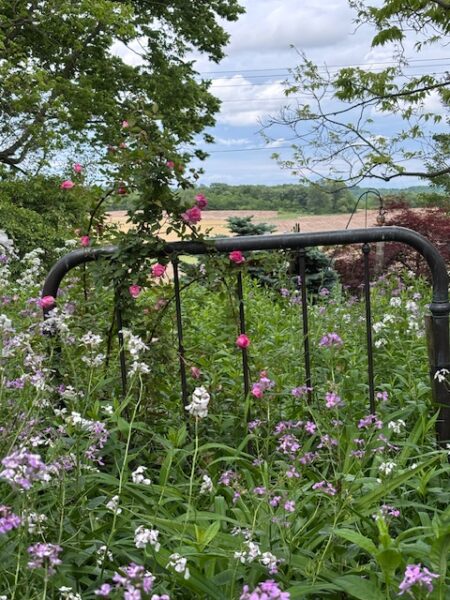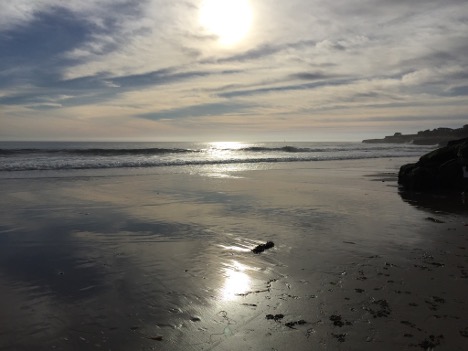Last fall I participated in a two-week yoga teacher training retreat through the Samarya Center, a wonderful non-profit yoga studio here in Seattle that is committed to making yoga accessible to everyone. In addition to their regular offering of classes to the general public, they also offer yoga to those in hospice, to veterans, to those suffering with addiction, and many others. Yoga is not just a physical practice at Samarya, the whole rich tradition of yoga philosophy is woven into everthing they do.
I have been practicing yoga for about 15 years and while I have long felt drawn to further training, I resisted because I wasn’t sure I wanted to be a “yoga teacher” per se. I knew I wanted to deepen into my personal practice and bring some of yoga’s gifts to my retreats. I went to speak with the director to help my discernment and she said, “I am not interested so much in creating more yoga teachers, but in creating better yogis.” And those words helped to usher me forward into a commitment to this journey of training. I want to be a yogi because for me, it means the same thing as being a monk in the world. One of the things I love about yoga philosophy and practice is that the goals are the same as the monk – to release the chatter of the mind, to be present to what is deeply true, and connect to the heart of the true Self, the divine spark we all carry within us – and through yoga I can explore familiar concepts and ideas through another lens and language.
One of the many unexpected gifts that came with the fall training was a reconnection to this tender, vulnerable part of myself that I didn’t realize had been hidden away. I feel strong and confident when I teach my Abbey work, I experience ease and joy with presenting material to others and facilitating safe and transformative spaces.
And yet, when it came to our first practice teaching session on our retreat, I was suddenly full of anxiety and some fear. I wanted to call forth my strong radiant self, but could only seem to muster this much smaller self, feeling tentative and somewhat shy. Around our fourth day in, when everyone’s defenses were being lowered by the intensity of the experience, I found myself weeping one afternoon and not knowing exactly why. I told the teacher I needed to take a break and went for a long walk. I breathed. I listened. I tried to make space for the tears to flow and just be with them without judgment.
Finally I walked by a pile of pine cones where I stopped and knelt down on the ground. The smell of earth rose up to meet me. I picked up these two large and glorious pine cones, stout and sturdy, impressive in their presence. And then I picked up two small pine cones, much more delicate and fragile-looking. I laughed because I saw myself there. My inner strength is well developed – in archetypal language I feel connected to my inner sovereign or queen. She loves feeling the difference her presence makes in the world. But there is also an inner tenderness that has also had times of being more developed, but has gone underground for a while as I have cultivated my strong side. I was feeling her renewed emergence and it was uncomfortable. I found myself connecting to feelings of embarassment and vulnerability.
Through the rest of the retreat I slowly felt less vulnerable about teaching yoga as part of our practice and now that I am in the practicum stage of the process my confidence grows even more. But the encounter stayed with me and for the last few months she has been inviting me to pay more attention to her. Later in the fall I had a spontaneous imagining where I invited this tender self to tell me her name. “She who cannot be filled” said the voice. Not with love, or money, or food, or education. I found myself weeping again. Then in my imagination I invited her to dialogue with my inner queen. The queen part of me wants to take care of this tender part, wants to tell her it’s okay because the queen is powerful enough for both of them. And yet “She who cannot be filled” would have none of that and asked the Queen if she would simply sit at the edge of the abyss with her, without words. To simply rest into the tender silence together. This was enough.
In the last several years I have been discovering how much the heart of the journey toward spiritual maturity is to walk toward what is uncomfortable. I don’t like it very much, but I do it because I believe there is power in dancing on the edges of our threshold of tolerance, and I have discovered incredible grace from being on those edges. We grow in our capacity to hold difficult things. Sitting with this tender part of myself is an essential aspect of that journey. And in recent weeks I have been finding all kinds of reasons to feel humbled and vulnerable.
In his Rule, Benedict has a long section on humility and its virtues. The word has its roots in humus which means “of the earth.” When we are humble we remember our earthiness, our limitations, our mortality. Humility is a form of truth-telling. In a recent interview with author Paula Huston, she writes:
Sin is complicated because it is rooted in lying. In order to convince ourselves to enter into sin, we must in some way deceive ourselves—rationalize away our doubts, tell ourselves a consoling story about our real motivations. Each lie necessitates another, and eventually we wind up morally and spiritually blind. Humility, on the other hand, refuses to self-justify. Humility would rather be unfairly accused than take the risk of egoistic self-deception. And thus it helps foster clarity of vision.
This call for me to embrace humility as a conscious practice these days is a way of stripping away my “egoistic self-deception” and refuse to deceive myself anymore, refuse to rationalize, or tell myself consoling stories about my real motivations. Welcoming humility means I let go of self-justifying anything, I just let it be what it is.
In yoga philosophy, one of the foundational concepts is satya which means “truthfulness” or “being with what is.” Here I find kinship to humility, to the practice of being ever so gracious to the tender part of me that feels stripped of any protection or strength. Can I show up to myself and allow this to emerge, to give room to the whole of my experience? How am I with myself in this place of vulnerability?
Where are you feeling the pull of tender vulnerability these days? How might you make space for her (or his) voice and presence in your life without trying to change or fix anything?




2 Responses
Those pine cones
….how very perfect that you “read” the message left for you. As always I grow through your post! Many thanks. J
Beautiful post, Christine. Where am I feeling vulnerable? I’ve just flung my heart out into the world in a most public forum… my first published book. The confidence to complete this act, the boldness to say YES, and my vulnerable inner self that asks “will they love me” are having in depth conversations these days! I’m also feeling called to a deeper meditation practice bc my monkey mind is running rampant.
Thanks for offering this contemplation today!